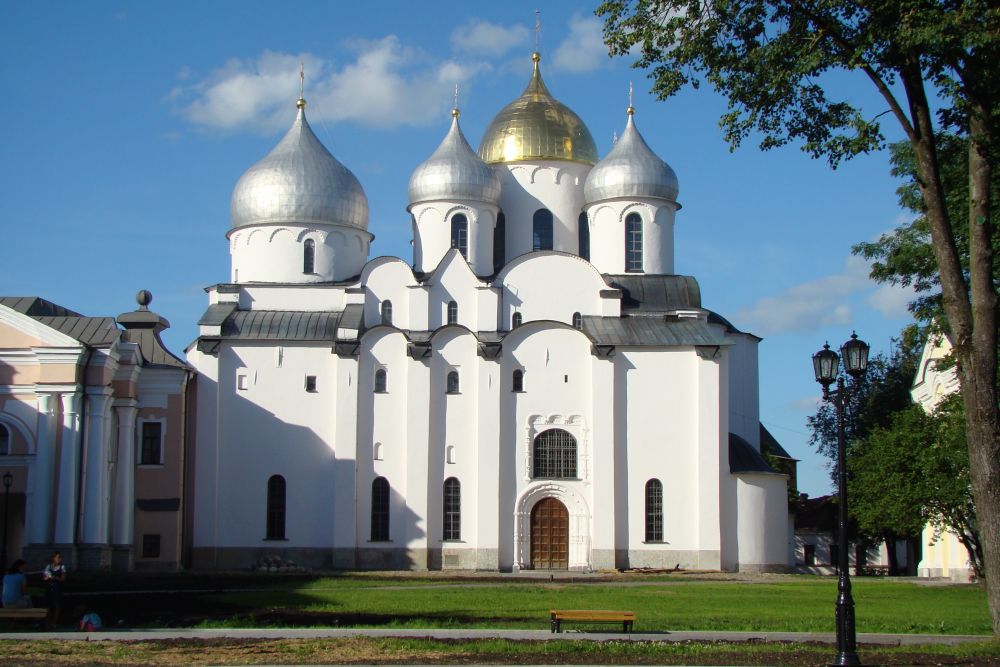

The Saint Sophia Cathedral in Veliky Novgorod is not only a pivotal historical monument but also a cornerstone in the religious and cultural life of Russia. Founded in the first half of the 11th century, around 1045-1050, by Prince Yaroslav the Wise, the cathedral is one of the oldest churches in Russia and has become an emblem of Novgorodian pride and identity.
Embodying the ancient Rus’ architectural style, the cathedral has withstood many historical events, including the Mongol invasions, political upheavals, and the ravages of time. Its robust form and five domes have become a symbol of resilience for the Russian Orthodox Church and an attraction for religious pilgrims and history enthusiasts alike.
Tourism at Saint Sophia Cathedral began to develop significantly during the Soviet era, specifically in the latter half of the 20th century when domestic tourism to historical cities like Veliky Novgorod increased. As international travel restrictions began to relax during the perestroika period in the 1980s, the cathedral started to attract more foreign visitors as well.
Following the collapse of the Soviet Union and Russia's transition to a market economy, the 1990s and 2000s saw a surge in the number of tourists visiting Veliky Novgorod. The cathedral, a key component of the Novgorod Kremlin (Detinets), became a popular destination for its stunning architecture, ancient frescoes, and historical significance.
In recent years, with the rise of digital technologies and social media, virtual tours and online information resources have made the Saint Sophia Cathedral more accessible to a global audience. Tourists can now explore the cathedral's beauty from afar, preparing for their visit or even choosing to experience it from the comfort of their homes.
Eco-tourism and cultural tourism have also seen growing trends in the industry, with visitors seeking experiences that are both environmentally sustainable and enriching in historical knowledge. The cathedral's surrounding area, with its picturesque landscapes and rich cultural heritage, has become part of the broader tourism offerings that cater to this demand.
Moreover, Veliky Novgorod's inclusion in the Golden Ring — a popular tourist route among the historical cities of Russia — has bolstered the cathedral's prominence as a must-visit landmark. The Golden Ring has contributed to increasing the flow of tourists interested in exploring Russia's medieval history and architecture.
Looking forward, the potential for tourism growth at Saint Sophia Cathedral remains significant. Efforts to preserve and promote the cathedral for future generations are ongoing, with plans to enhance visitor facilities and provide more in-depth educational resources.
As international travel continues to evolve, the importance of such iconic sites promises to remain a key driver of tourism in Russia. The Saint Sophia Cathedral, with its majestic presence and historical depth, is expected to continue to draw visitors from around the world, eager to witness a living piece of ancient Russian history.